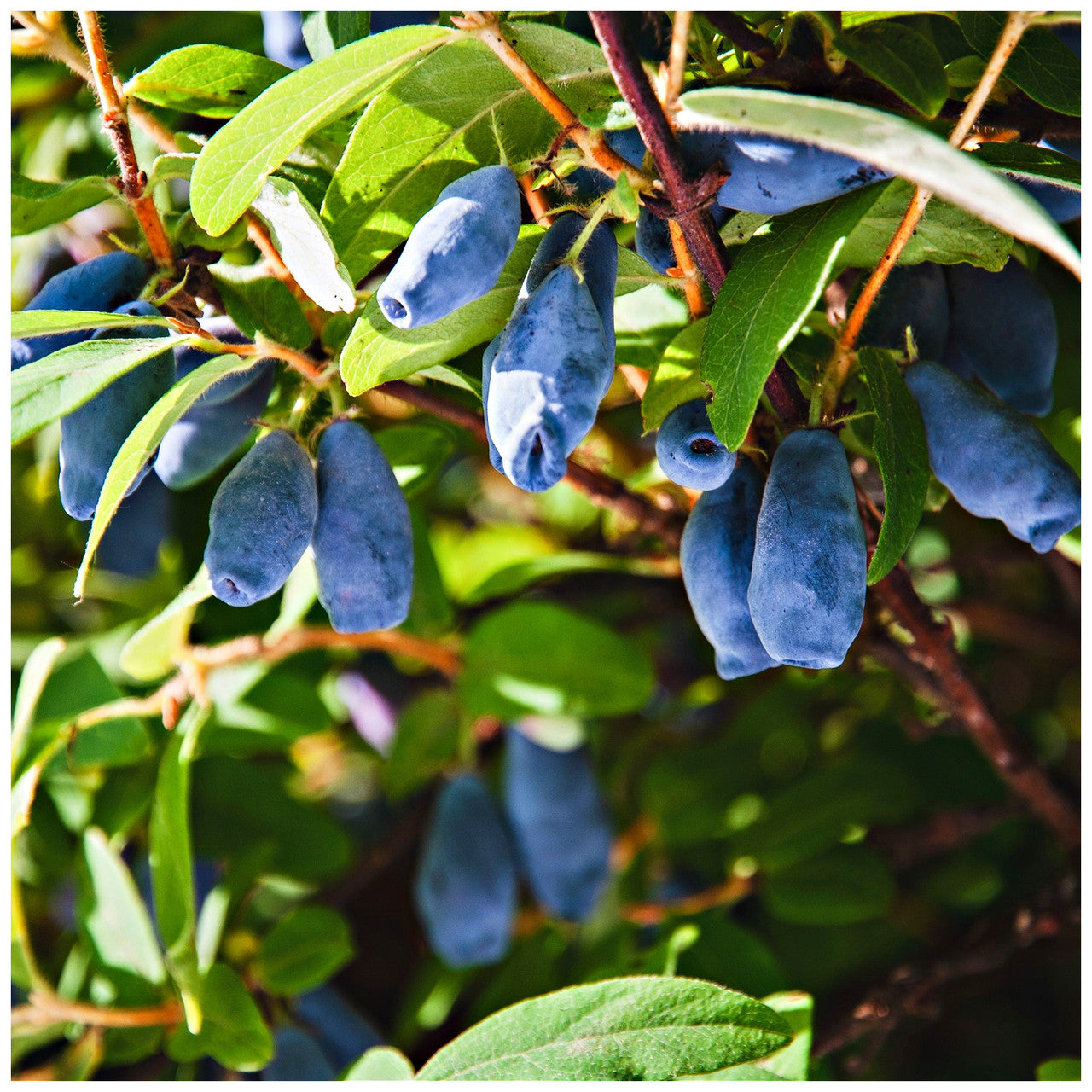
Dharaseeds
Lonicera Blue Velvet Honeyberry Seeds
Estimated delivery between April 16 and April 19.
Lonicera Blue Velvet Honeyberry Seeds
The Lonicera Blue Velvet Honeyberry (Lonicera caerulea) is a hardy, early-fruiting shrub known for its sweet and tangy berries, which are a favorite among gardeners and home cooks alike. Often referred to as "honeyberries," the fruit of this shrub resembles elongated blueberries but offers a more complex flavor. With its robust growth, attractive foliage, and ability to thrive in colder climates, this variety is an excellent choice for gardeners looking for a unique and productive addition to their landscape.
Key Features of Lonicera Blue Velvet Honeyberry Seeds
Early Fruiting: One of the earliest fruiting plants in the garden, the Blue Velvet Honeyberry produces edible fruit in early spring, typically before other fruits like strawberries or raspberries. This makes it an excellent option for early-season harvesting.
Unique Flavor: The berries of the Blue Velvet Honeyberry are sweet with a hint of tartness, often described as a mix of blueberry, raspberry, and honey. This distinctive flavor makes them perfect for fresh eating, jams, jellies, or baked goods.
Hardy and Resilient: Known for its cold hardiness, the Blue Velvet Honeyberry thrives in USDA hardiness zones 2-7. It is well-suited to colder climates, where many other fruit-bearing plants may struggle.
Attractive Growth Habit: The plant itself is a compact, deciduous shrub, reaching a height of about 3-5 feet. It features attractive dark green leaves and soft, fragrant white flowers in early spring, making it a lovely addition to any garden, even before the berries appear.
Benefits of Lonicera Blue Velvet Honeyberry Seeds
Cold Tolerant: Unlike many other fruiting plants, the Blue Velvet Honeyberry is exceptionally cold-tolerant, thriving in regions with harsh winters and early frosts. Its early fruiting makes it a valuable choice for gardeners in colder climates, offering a harvest before other berries.
Pollinator-Friendly: The Blue Velvet Honeyberry produces flowers that attract pollinators like bees and butterflies. This makes it a great addition to a pollinator-friendly garden, promoting biodiversity while providing delicious fruit.
Low-Maintenance: Once established, the Blue Velvet Honeyberry is relatively low-maintenance. It requires minimal care beyond regular watering and occasional pruning. Its resilience and ability to thrive in a range of soil types make it an easy plant to incorporate into your landscape.
Nutrient-Rich Berries: Honeyberries are packed with antioxidants, vitamins, and minerals, making them a healthy addition to your diet. They are particularly rich in vitamin C and flavonoids, contributing to overall health and wellness.
How to Plant and Care for Lonicera Blue Velvet Honeyberry Seeds
Starting Seeds: To start your honeyberry plants from seed, sow the seeds indoors 8-10 weeks before the last expected frost. Use a sterile seed-starting mix and press the seeds gently into the soil. Keep the soil moist but not soggy, and maintain a temperature of 65-70°F (18-21°C) for optimal germination. The seeds may take 3-6 weeks to germinate, so be patient.
Transplanting Seedlings: Once the seedlings have grown large enough to handle and the danger of frost has passed, harden them off by gradually exposing them to outdoor conditions. When transplanting, choose a location with well-draining soil and full sun to partial shade. Space the plants 2-3 feet apart, as they will spread out as they mature.
Watering: Honeyberries prefer consistently moist, well-drained soil. Water deeply during dry spells, especially in the first few years of growth. Avoid letting the soil become waterlogged, as this can lead to root rot. Drip irrigation or a soaker hose is ideal for keeping the soil moist without wetting the foliage.
Lighting: The Lonicera Blue Velvet Honeyberry grows best in full sun, although it can tolerate some partial shade. The more sunlight the plant receives, the better the fruit production. Aim for at least 6 hours of sunlight a day to encourage healthy growth and fruiting.
Temperature: Hardy in USDA zones 2-7, the Blue Velvet Honeyberry is well-suited to colder climates. It can tolerate temperatures as low as -40°F (-40°C) once established, making it ideal for gardeners in northern regions. In warmer climates, ensure the plant is shaded from the hottest afternoon sun to prevent heat stress.
Fertilizing: Fertilize the plant with a balanced, slow-release fertilizer in early spring before new growth begins. Avoid over-fertilizing, as this can lead to excessive foliage growth at the expense of fruit production. A light application of compost or organic mulch around the base of the plant will help improve soil fertility.
Pruning: Prune your honeyberry bush in late winter or early spring before new growth begins. Remove any dead or damaged branches, and thin out any overcrowded areas to improve air circulation. Pruning will help the plant maintain a healthy shape and encourage better fruit production.
Perfect For:
- Cold Climates: Ideal for gardeners in colder regions looking for an early-fruiting, cold-hardy fruiting shrub.
- Pollinator Gardens: A great choice for attracting bees and butterflies while providing fruit for human consumption.
- Berry Lovers: Perfect for those who enjoy unique, tangy-sweet berries in early spring for fresh eating or making preserves.
- Low-Maintenance Landscapes: Suitable for gardeners who want a productive, low-maintenance plant that requires minimal care.
Why Choose Lonicera Blue Velvet Honeyberry Seeds?
The Lonicera Blue Velvet Honeyberry is a must-have for gardeners looking to add a unique, productive shrub to their landscape. Not only does it provide early-season fruit, but it also thrives in colder climates, making it an excellent option for gardeners in northern areas. With its sweet and tangy berries, hardy nature, and minimal care requirements, the Blue Velvet Honeyberry is an investment that will reward you with delicious fruit year after year.








